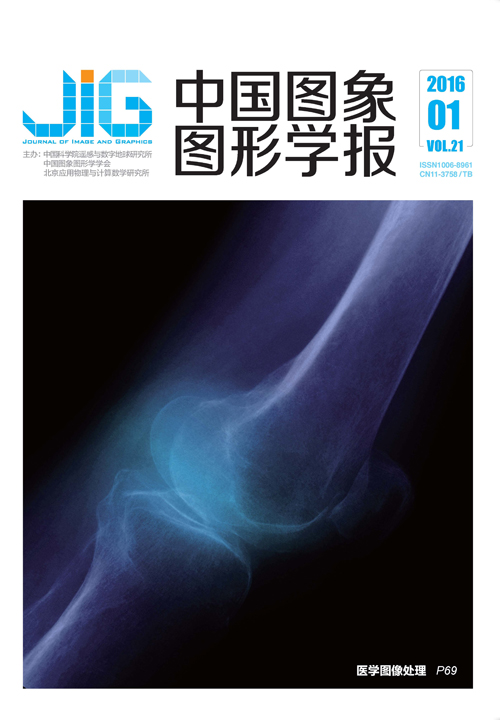
Plücker直线描述的空间后方交会
摘 要
目的 现有的空间后方交会方法没有充分利用成像光线的几何拓扑关系,共线条件的几何约束性弱,提出基于Plücker坐标的空间后方交会方法.方法 将成像光线用Plücker直线表示,通过Plücker成像光线在空间中的螺旋位移,使得物点在像点和投影中心所确定的Plücker直线上,建立基于Plücker成像光线的共线条件方程.结果 针对小倾角航空与近景影像,本文方法与传统的欧拉角法相比求解得到的外方位元素最大线元素误差分别从0.88 m降到0.53 m,从0.06 m降到0.01 m;最大角元素误差分别从0.016 2弧度降到0.002 9弧度,从0.087弧度降到0.066弧度.针对大倾角影像,欧拉角法不收敛而本文方法能正确解算.结论 本文方法由于增强了模型的几何强度,获得了更高的定位精度,且对于大倾角影像也同样能够获得正确而稳定的外方位元素解算结果.
关键词
Space resection method based on Plücker line
Sheng Qinghong1, Chen Shuwen1, Xiao Hui2, Zhang Bin1, Wang Qing1, Fei Lijiao1(1.College of Astronautics, Nanjing University of Astronautics and Aeronautics, Nanjing 210016, China;2.School of Environmental Science, Nanjing Xiaozhuang University, Nanjing 211171, China) Abstract
Objective Space resection is one of the fundamental issues in the field of digital photogrammetry and computer vision. Traditional methods based on control points limit the robust automation of the space resection procedure. The primary objective of space resection is to effectively and reliably describe the relationship between object points, the corresponding image points, and the projection center. One of the classical solutions to space resection is based on collinearity equations. A solution based on collinearity equations can represent the rotation matrix in many ways, such as Euler angle, Rodriguesmatrix, quaternion, and dual quaternion. Existing space resection methods are mainly based on point primitives, and do not fully consider the geometric topological relations of space lines; the geometric constraint conditions of the collinearity equation are weak. In this paper, a space resection method based on the Plücker line is presented. Method Plücker coordinates, a representation of space lines consisting of six parameters,has the advantages of clear geometric meaning,concise formation, and cost-effective computation.In this method, the imaging ray is representedin Plücker coordinates to obtain the Plücker line.Thereafter, on the basis of the screw movement of Plücker lines in space, the object point is obtained on the line and is identified by the image point and projection center. Finally, a collinearity equation based on the imaging ray of Plücker line is established. Therefore, the relationship between the control line in object and their corresponding line in image is established. By using the Plücker coordinates of some control lines in the object and corresponding image lines, the exterior orientation elements can be anti-calculated. Result The tests performed on aerial images and close-range images with small inclination indicate that the maximum error of the line elements of the exterior orientation elements decreases from 0.88 m to 0.53 m and from 0.06 m to 0.01 m; the maximum error of the angle elements decreases from 0.016 2 radian to 0.002 9 radian and from 0.087 radian to 0.066 radian compared with the traditional Euler method. For images with large inclinations, the space resection method can be used for correct calculations, where as the Euler method cannot. The Euler method has strong dependence on the initial values of attitude elements and line elements. When the initial values are poor, such as a large attitude, the iterative calculation will slowly converge or even not converge. The Plücker line method uses dual quaternion to represent the rotation matrix, which overcomes the aforementioned issues by uniformly representing the attitude and line elements.Conclusion The Plücker line method avoids the complicated process of solving the attitude and position elements separately, thus significantly improving efficiency.Given the enhanced intensity of the geometry of the model, the method obtains high positioning accuracy and can be used for the positioning of the exterior orientation elements of images with large inclination.
Keywords
|



 中国图象图形学报 │ 京ICP备05080539号-4 │ 本系统由
中国图象图形学报 │ 京ICP备05080539号-4 │ 本系统由